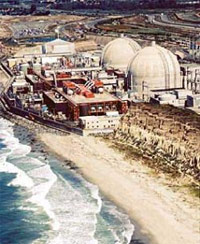State governments looking for ways to cope with severe drought in the Southeast should consider using nuclear power to desalinate seawater. This is a safe and proven technology that the U.S. Navy has been using for more than a half-century to provide drinking water for the crews of its nuclear-powered submarines.
Until a few years ago, the water debate here in Georgia was conducted in an almost surreal atmosphere. We appeared to have sufficient supplies of water to meet our needs, and most of us seemed to feel that this state of affairs would continue indefinitely. By definition, miracles do not often happen, and it is not likely that the water problem will be solved by a miracle. The solution, if there is one, will be found in the development of comprehensive water use plans, strict conservation and technology. No one of these alone will solve our water problems, but all of them together have a good chance of succeeding.
The discrepancy between the need for water and its availability is seen not only in the difficulty of allocating scarce resources for households, industries, farms, electricity production, wildlife and recreation but also sharing common supplies with neighboring states. As our water resources diminish, it is becoming clear that unless we can come up with substitute sources of water, we will simply have less water and a lower standard of living.
Experience shows that nuclear reactors can be used to heat seawater in a process known as "reverse osmosis" to produce large amounts of potable water. The process is already in use in a number of places around the world, from India to Japan and Russia. Eight nuclear reactors coupled to desalination plants are operating in Japan alone.
Seawater desalination raises absolutely no technical problems. The technologies have been used for many years. But most of the world's 12,500 desalination plants use fossil fuels to provide the large amounts of energy needed to desalinate seawater, and that poses economic problems due to the rising cost of oil and natural gas and environmental problems from greenhouse-gas emissions. Nuclear power, on the other hand, is now economically competitive with fossil fuels and produces no greenhouse gases. It is a viable alternative for desalination.
Nuclear reactors could serve a dual purpose, providing both power and fresh water, as they do in nuclear submarines. If anchored a few miles offshore, nuclear desalination plants could be a source of large amounts of potable water transported by pipelines hundreds of miles inland to serve the needs of communities and industries.
A study completed by Argonne National Laboratory determined that dual-purpose reactors — called cogeneration plants — "could offer a major portion" of the additional water and electricity that municipalities and industry will need for maintaining sustainable development and growth in the years ahead. The study determined that nuclear power would be less costly as a heat source for water desalination than fossil-fuel plants using oil or natural gas. But it said that costs could vary according to the type of reactor used and its specific location, among other factors, requiring further economic analysis.
The next big step needs to be taken by the Department of Energy. It should propose construction of a demonstration reactor for desalination.
Production of large amounts of fresh water would alleviate water shortages in the decades ahead with attendant benefits to homeowners and businesses as well as the environment. Now is the time for the Department of Energy, in concert with Georgia and other states, to determine how best to proceed with nuclear desalination.


